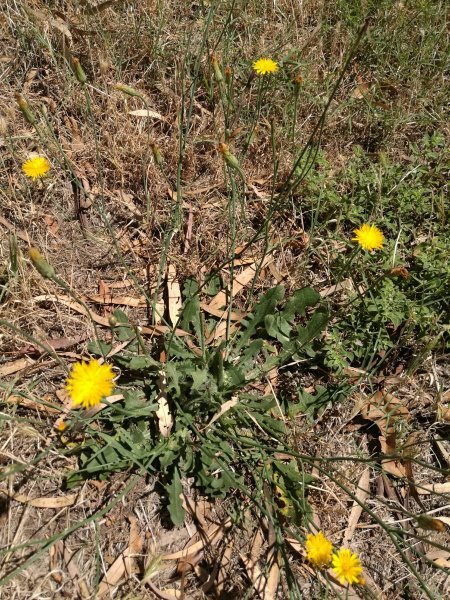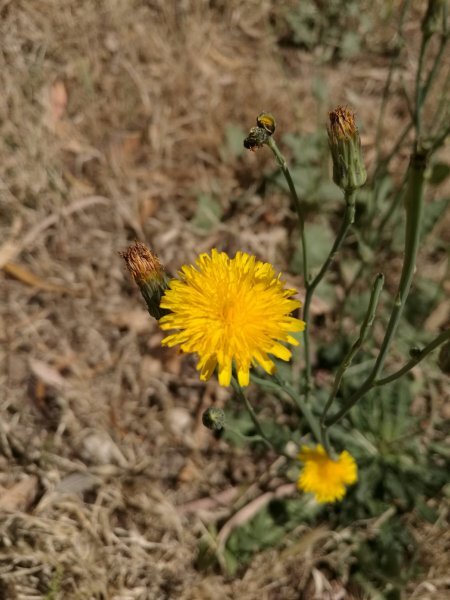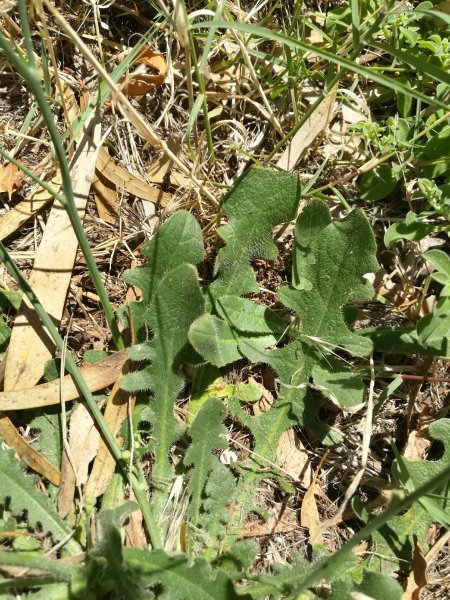Catsear (Hypochaeris radicata)

Common names: Catsear, Cats Ear, Flatweed
Taxonomic name: Hypochaeris radicata
Family: Asteraceae
Uses: Food
Area of origin: Europe
Warnings: None
Catsear (Hypochaeris radicata) is a common weed, often mistaken for Dandelion (Taraxacum officinale) amongst which it often grows.
It doesn’t have the same medicinal attributes that Dandelion has, which might be a surprise as they share the same soil and conditions.
Every part of Catsear is edible and lack the distinctive bitterness of Dandelions. The old leaves can be stringy and bitter while the young ones are soft. If you grow Catsear in your garden, cover the rosette of leaves while they grow. This blanches them and removes any trace of bitterness. The petals have been used in wine and the roots can be roasted and ground as a coffee substitute or steamed as a root vegetable. My favourite bit is the young buds, eaten raw.
Stems and flowers aren’t great, but can be eaten in a pinch, while the root can be almost sweet sometimes. It is often dried and ground as a coffee substitute.
The next question is ‘how to tell Catsears from Dandelions‘?

Catsear flowers are very similar to those of Dandelions
The flowers look so similar that it’s not worth looking at those but the stem beneath them is the distinctive feature. Dandelions only have a single, unbranched, stem, while Catsears have a thinner, wiry stem that may be branched, especially near the flowers.
Dandelions have a hollow stem that bleeds bitter, white latex when broken. Catsear doesn’t.

The leaves are different too. Catsear leaves have less deeply indented and rounder teeth. Dandelion leaves are smooth too, while Catsear leaves are quite hairy.
There you go. If you mix up the two it won’t be fatal and you’ll still get a feed but if you’re looking for Dandelions for their medicinal properties, you won’t be happy.